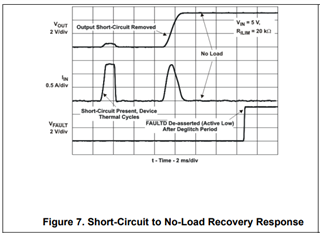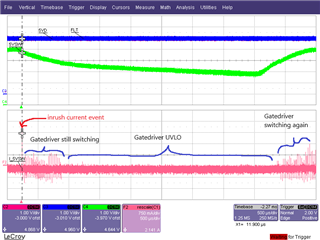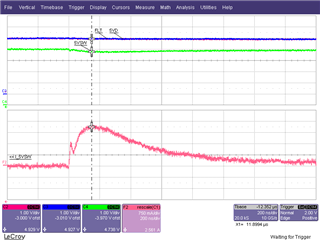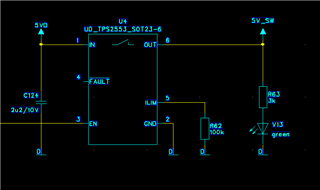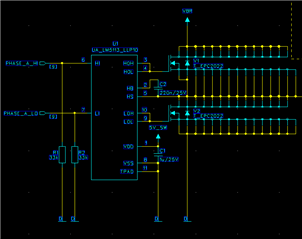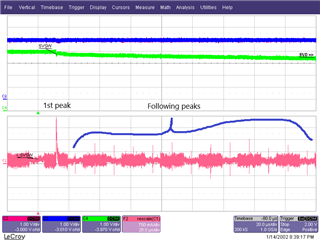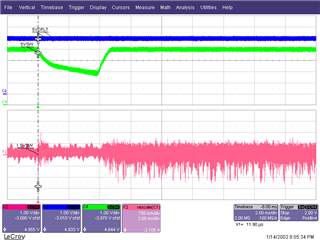Other Parts Discussed in Thread: LM5113
Hi together,
we are using TPS2553 in order to switch the gatedriver suply for three LM5113 with EPC GAN-Fets. We inspected, that the current limit MOSFET of the TPS2553 turns off
when we start sending PWM signals to the gatedrivers (Gatedriver decoupled according to datasheet with 1uF each).
We could measure high inrush currents of about 3A within 300ns. Current limit of the TPS2553 is set to about 250mA, which is more than sufficient at normal operation.
So as I understand from the datasheet, the TPS2553 needs at least 2us to respond to an overcurrent event (our inrush event is way faster than that).
Then it says, that the current limit amplifier recovers after the short circuit event has gone and starts regulating to the current limit set.
In our case, the inrush current sinks within 1us from 3A to values under 250mA.
In an other thread i read, that it takes about 300-500us until the current limit amplifier recovers. We can observe, that in our case it takes 4-5ms and don´t know why?
nFAULT is not triggered. This leads to the problem, that the gatedrivers fall into UVLO and recover after 4-5ms when the current limitation MOSFET decides to turn on again.
It seems like that the high and fast inrush current transient causing the regulator to enter a bad state.
Is there anything known about problems with fast inrush current transients?
Thanks in advance!


